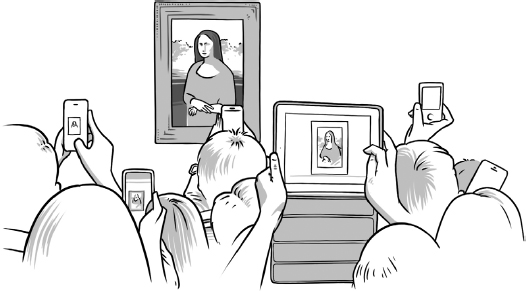CHAPTER 3 Digital connections: Stimulus, channels, touchpoints and typologies
This chapter introduces the world of digital channels and how companies should select them carefully.
In today’s digital landscape, capturing the moment has almost become the only way to prove that the moment even existed (see figure 3.1, overleaf). Digital trends in our society have allowed us to access data and information worldwide, communicate without boundaries of time or place, and make multiple transactions in real time. With the number of internet users consistently increasing, so too are the number of digital channels and routes for communication.

Figure 3.1: viewing the Mona Lisa in the Louvre, Paris, in the digital age
In a world full of digital trends and digital moments, how can we embrace this new way of interacting and design for it? One way of doing this is to embrace the medium through which users interact with most businesses today — the digital channel. Digital channels are at the centre of communication between an organisation and its customers.
‘Digital channels’ is a collective term to describe technology-based platforms that use the internet to:
- connect with customers
- provide a range of different content and functions
- facilitate communication with a range of different levels of interaction.
This includes social media such as Instagram, Facebook and Twitter, content sites ...
Get Affected now with the O’Reilly learning platform.
O’Reilly members experience books, live events, courses curated by job role, and more from O’Reilly and nearly 200 top publishers.

